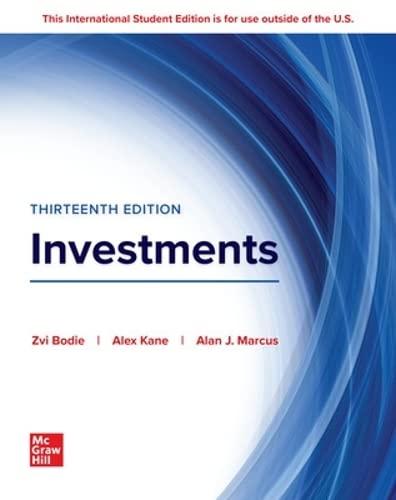The Retired Fund is an open-ended mutual fund composed of $500 million in U.S. bonds and U.S.
Question:
The Retired Fund is an open-ended mutual fund composed of $500 million in U.S. bonds and U.S. Treasury bills. This fund has had a portfolio duration (including T-bills) of between three and nine years. Retired has shown first-quartile performance over the past five years, as measured by an independent fixed-income measurement service. However, the directors of the fund would like to measure the market timing skill of the fund’s sole bond investor manager. An external consulting firm has suggested the following three methods:
a. Method I examines the value of the bond portfolio at the beginning of every year, then calculates the return that would have been achieved had that same portfolio been held throughout the year. This return would then be compared with the return actually obtained by the fund.
b. Method II calculates the average weighting of the portfolio in bonds and T-bills for each year.
Instead of using the actual bond portfolio, the return on a long-bond market index and T-bill index would be used. For example, if the portfolio on average was 65% in bonds and 35% in T-bills, the annual return on a portfolio invested 65% in a long-bond index and 35% in T-bills would be calculated. This return is compared with the annual return that would have been generated using the indexes and the manager’s actual bond/T-bill weighting for each quarter of the year.
c. Method III examines the net bond purchase activity (market value of purchases less sales)
for each quarter of the year. If net purchases were positive (negative) in any quarter, the performance of the bonds would be evaluated until the net purchase activity became negative
(positive). Positive (negative) net purchases would be viewed as a bullish (bearish) view taken by the manager. The correctness of this view would be measured.
Critique each method with regard to market timing measurement problems.
Use the following data to solve CFA Problems 4 and 5: The administrator of a large pension fund wants to evaluate the performance of four portfolio managers. Each portfolio manager invests only in U.S. common stocks. Assume that during the most recent 5-year period, the average annual total rate of return including dividends on the S&P 500 was 8%, and the average nominal rate of return on government Treasury bills was 2%. The following table shows risk and return measures for each portfolio:
.P-96 Portfolio Average Annual Rate of Return Standard Deviation Beta P 11% 20% 1.1 Q 18 18 2.1 R 5 10 0.5 S 10 14 1.5 S&P 500 8 12 1.0
Step by Step Answer:

ISE Investments
ISBN: 9781266085963
13th International Edition
Authors: Zvi Bodie, Alex Kane, Alan Marcus





